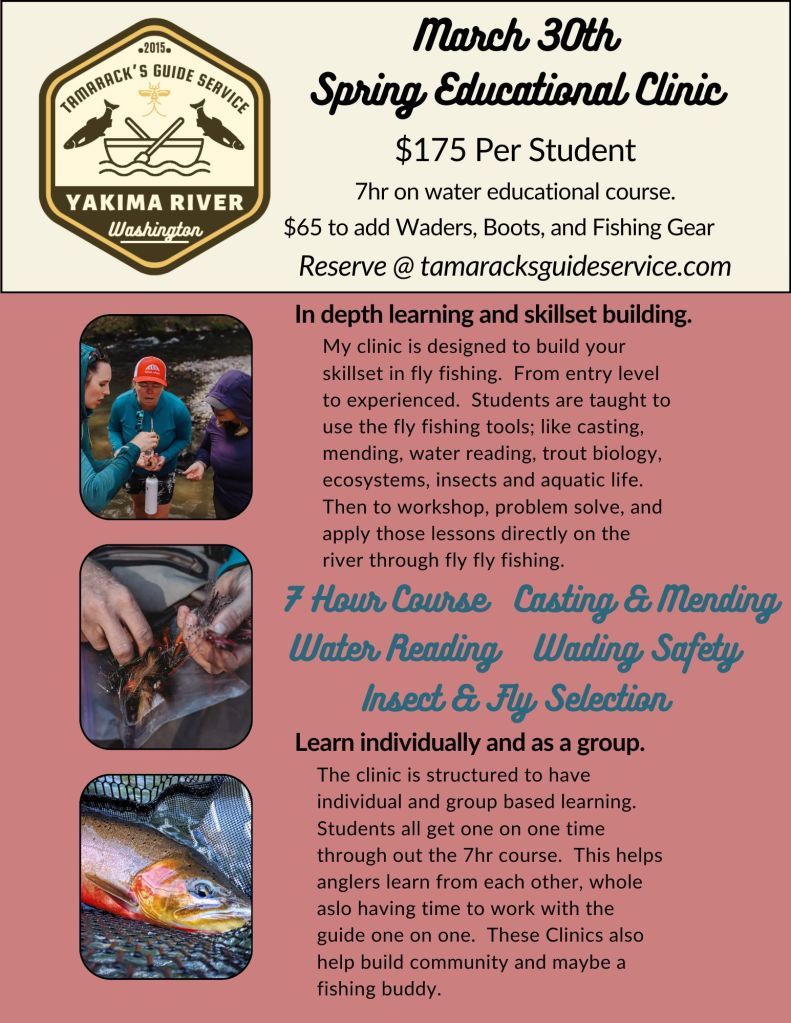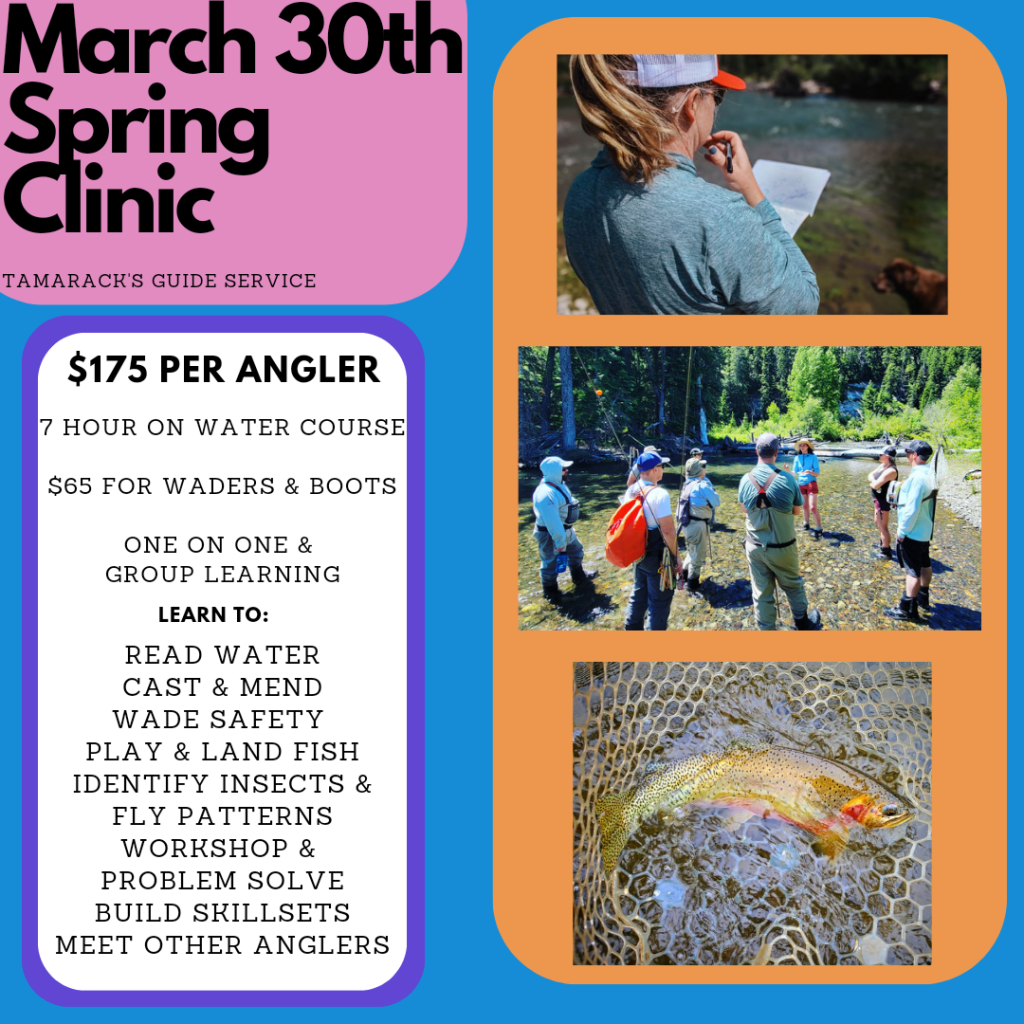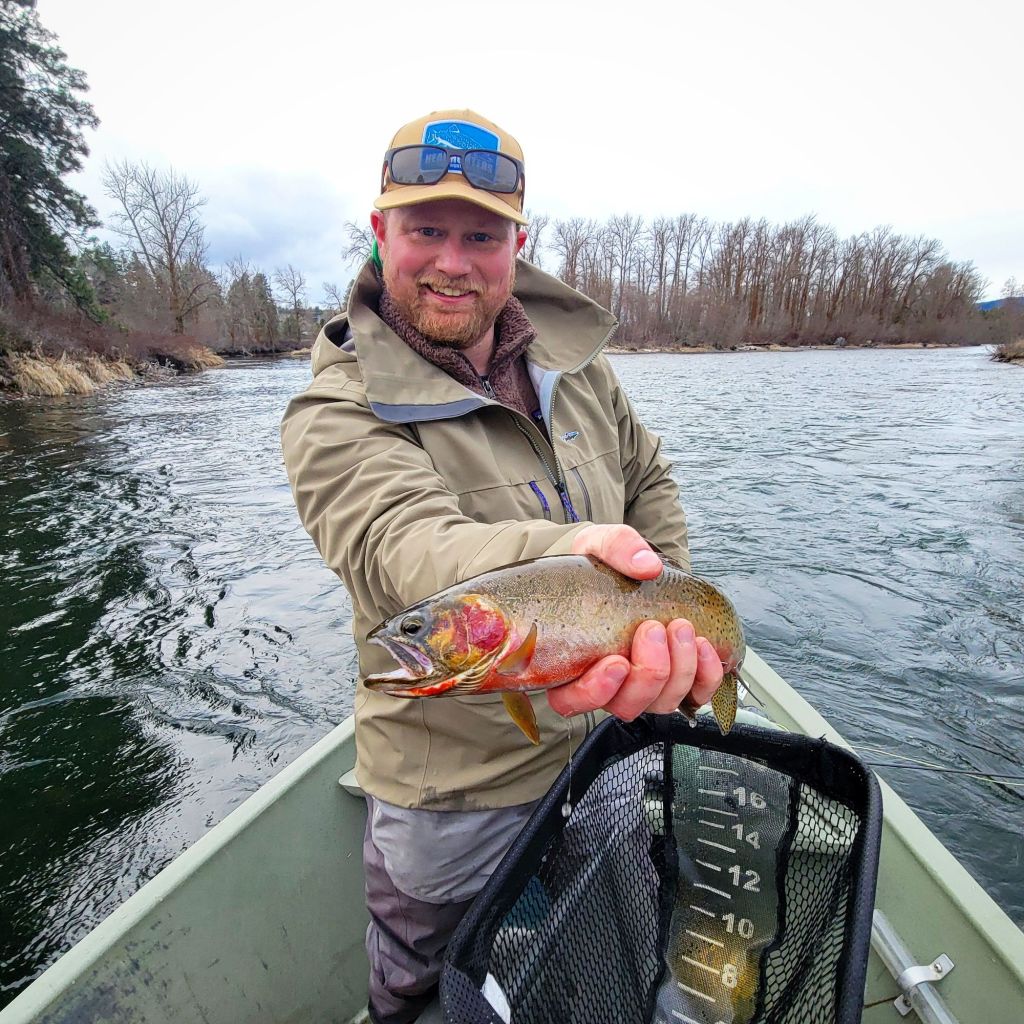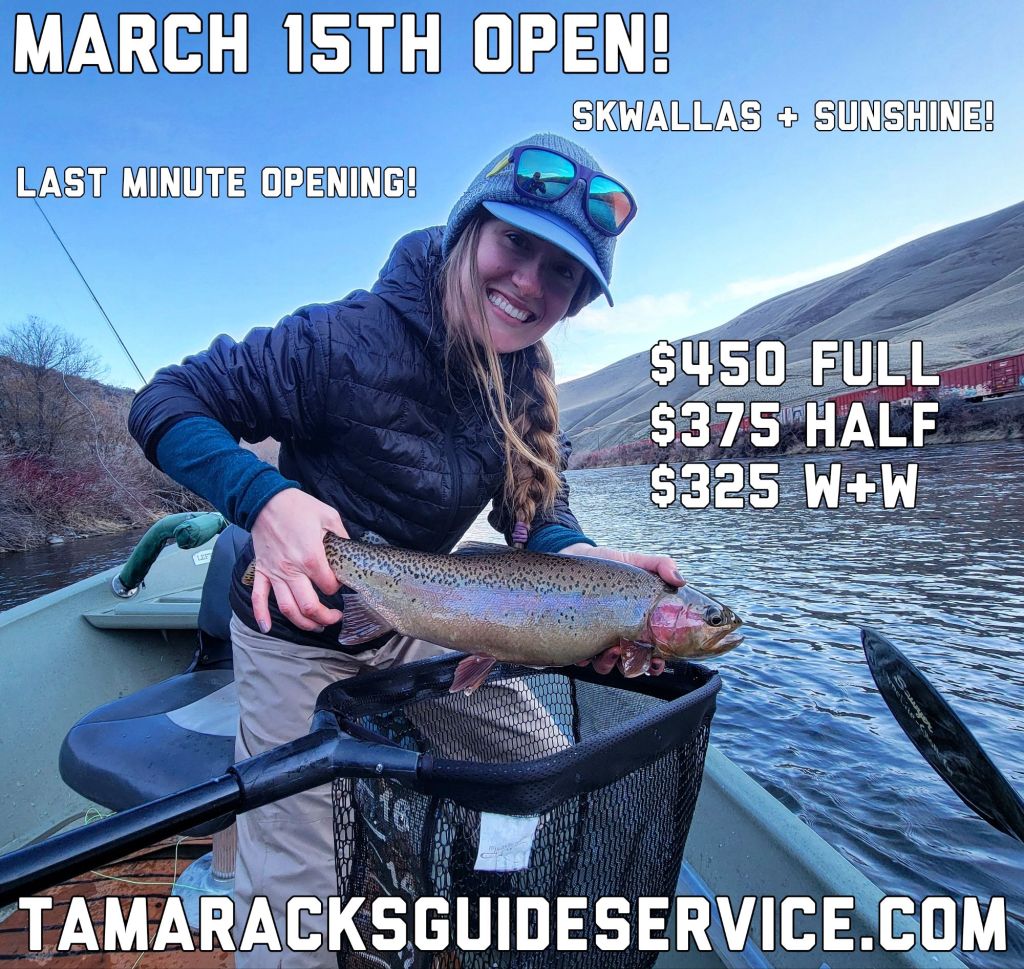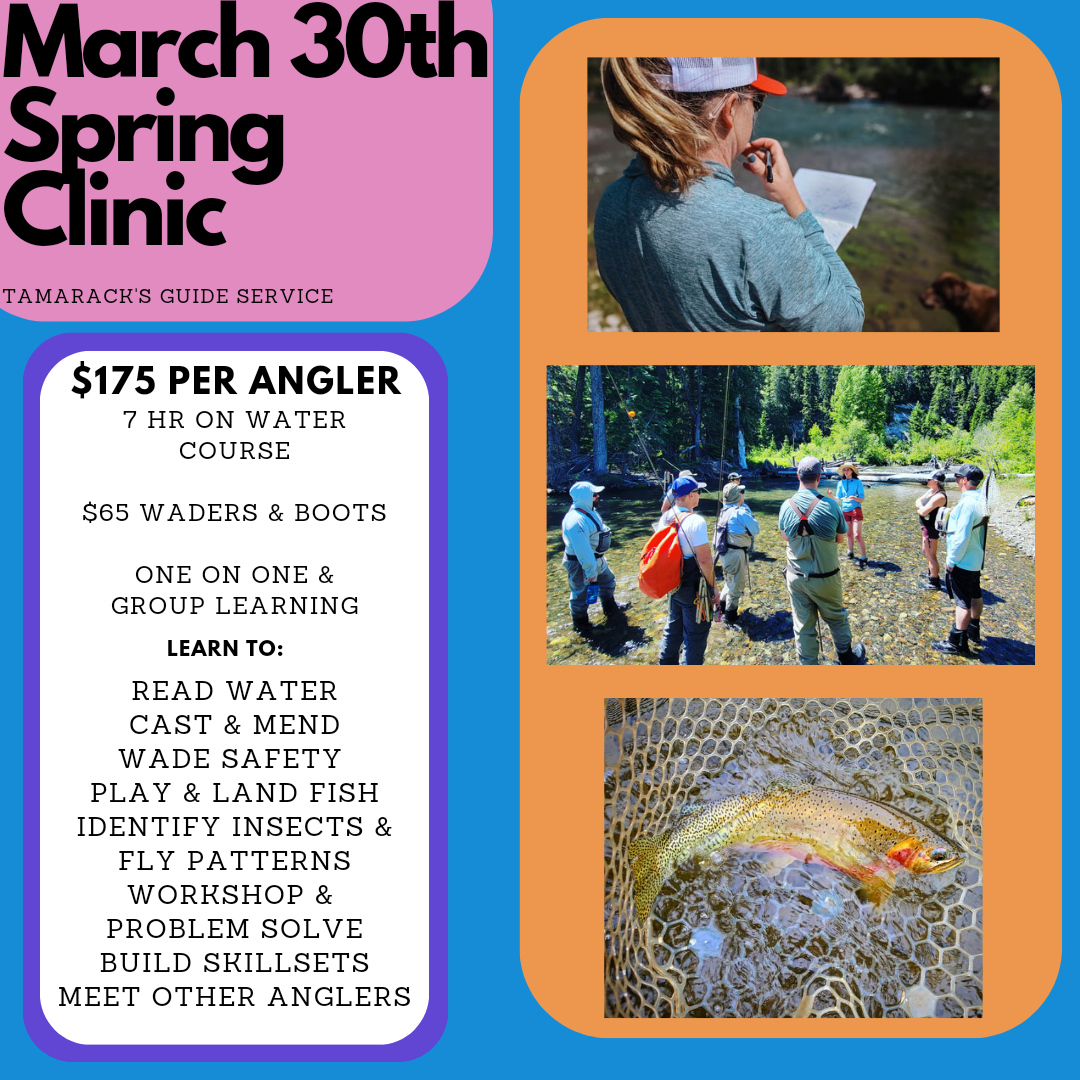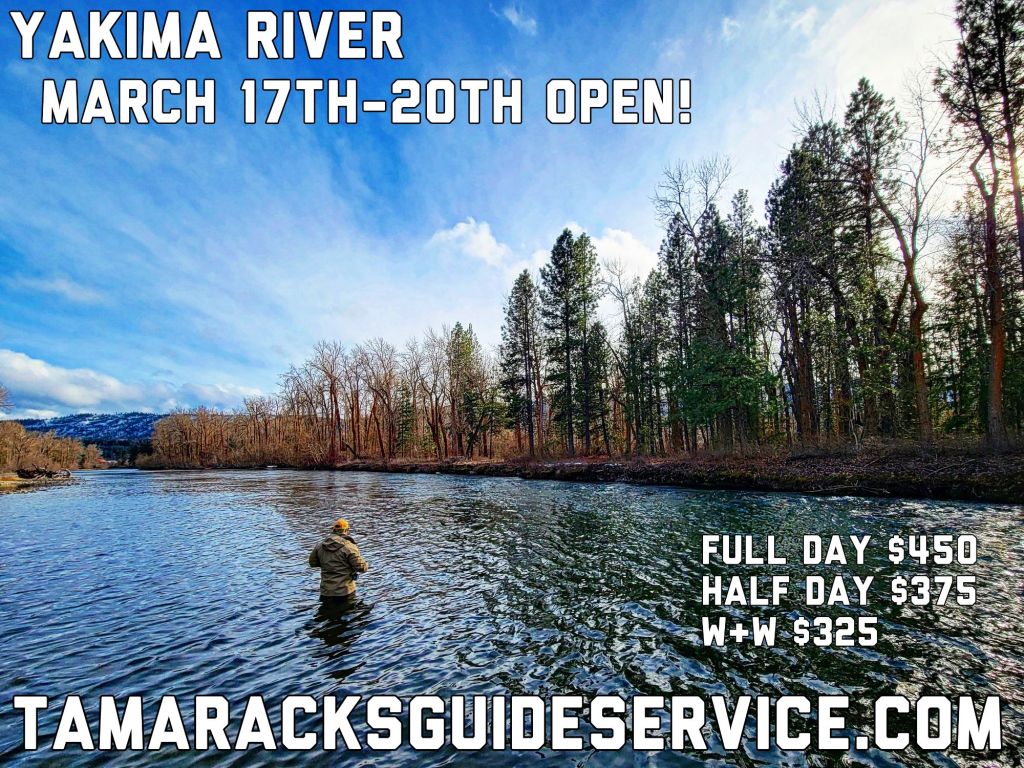I have hard days, just like every angler. As an experienced angler, I know some days are just not very fishy. I can feel it on those days. It’s usually just timing but some days just aren’t fishy because trout are worried about something other than food.
There is always an answer. Sometimes, it means they won’t eat, which means fishing is slow for a while. Sometimes, it means they won’t eat at all. I’ve had lots of days in the past 10 years that are slow. Less and less, but it still happens. Bad weather moves in, River blows out, first day of bright sunshine. Lots of things. I can anticipate and adjust throughout the day. I’m rather good at it.
I know the Yakima really well. Every inch. Even the LC. I have my preferred floats just like every guide and angler. I have ones I know better than others. But I don’t learn too much from the Yakima. We just kind of understand each other.
I’m patient. Really….really…really…patient anglers. It’s my best quality as a guide and probably as a person. I’m rather unphased by much. Tangles, lost flies, broken rods that are accidents or fish related. Normal guide day shit. Not a big deal. Happens all the time. I can usually help get it fixed with instruction, so at the end of the day, it’s on me to make you better so mistakes happen less. Because that’s all that stuff is. Mistakes.
Not listening, casting too much line, not listening, not paying attention to rod tips, or not watching bobbers and flies, not listening, setting too fast, too slow not enough slack, too much slack, missed fingers on line, bad counter, drop of rod tips, all mistakes. They happen, it’s fishing, don’t get to bummed.
These things don’t break my patience. Test it sometimes, yes, but at the end of the day, I don’t have the rod in my hand.
I still have hard days with clients. New and regulars. Sometimes people are off their game, aren’t focused, have stuff on their mind. Some days the fish are playing really tough. Sometimes I’m a little off. Not usually the case…but sometimes.
The hardest days are with regulars. Especially ones that put pressure on me to perform. And thats what they hire me for. I’m a high-performance guide with a lot of my regulars. We are after numbers and size, here to sweep and clean.
It’s a two-way street. I bring my absolute best A game, pick the best float based on all conditions including recent guide pressure in previous days, weather shifts, flow changes, and every other thing that factors into what it takes to perform at a high level.
Clients…are also held to that high standard…by me. And I’m really good at this anglers. I expect excellence on these days. I am really hard on mistakes and when things get sloppy I’ll let you suffer through it until it’s time to shape up and then I will be on your ass with every single casting stroke and mend required to catch fish. I won’t let you get away with shit. And when you fuck it up…I’ll let you know. I’ll help you get better, but it has the sting of disappointment on it.
It’s intense, and again, it’s agreed upon, and we all know what’s up when this is going down. This isn’t something you just get to do. It is something that usually morphs throughout the day. When a slow day hits, with one of these clients. It can break relationships and sever ties between guide and client. It’s happened. Not for a long time, but it has. I’ve gotten a lot better at guiding since then, and I’m not as young and out to prove. I still like to get on that level and do most of the time, but I’ve made it a smooth process over the years. Ease you into it. Like a good coach as one of my last clients and girlfriend pointed out.
A great guide will get through these hard days and have an ace up their sleeve. Mine is patience and knowledge.
On slow days with more demanding clients…my patience can get razor thin. I wait it out. Fish gotta eat sometime. And I know a lot of things about trout and this river. When sloppy casts start flying, attitude gets sour, and complaining starts… that’s usually when I start to turn it on. Because when a client hits that space, it means we are almost about to get started.
You’ll know it’s started when I start rowing more, slowing the boat down, and then telling you where to cast. I’m not asking, telling. I won’t let you bomb BP casts, and I’ll tell you to tighten it up. If it’s real shit I’ll tell you to clean it up. I will tell you when to recast, and where. I’ll adjust it by 12 inches and have you repeat it 5 times. I’ll back row, adjust the rig, and make you do it again. If you’re not listening, you’re wasting precious time. When I’m in this mode… I need everything you’ve got, and you’re going to be rewarded if you are up to the challenge.
It means that I’ve figured it out, it’s dialed and now is the time. When it’s slow all day and I’m still on river as the sun sets…it means I know what I’m doing. I would’ve rowed us out and called it otherwise. Get ready, and let’s really fish. I call it cleaning house for a reason.
Hard days are worth it. You’ll learn a lot about fish and about fishing. And when I say about fishing, I don’t mean casting and flies, and all that stuff. I mean, how to be an angler. How to respect the space, be a part of it, and appreciate the guide who really understands it. They are there to help you understand it. It’s not just about the fish. Understanding them, you’ll earn more from them and the rivers they call home.
Tamarack




